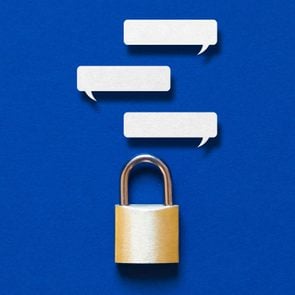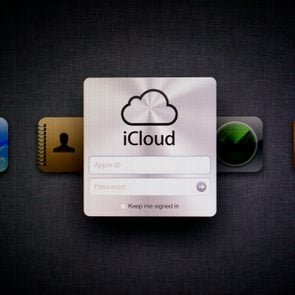Deleting an App? Do These 3 Things First—or Risk Getting Hacked
Updated: Jun. 25, 2024
Removing an app from your phone isn't as simple as it sounds. Get top tips on deleting apps safely from our experts.

Deleting apps taking up precious space on your phone is always a good idea—especially for the ones that could be spying on you. But for some apps, you’ll need to do more than simply hit the “delete” button. While you may think you’ve dumped it, deleting an app doesn’t mean it’s uninstalled, and its remnants could still be lurking in the background, leaving your device vulnerable or causing other issues.
“The biggest misconception is that once an app is deleted, the relationship with the app and the company that owns it is severed,” says Jean Vixamar, Associate Director of Security Risk Management at Verizon. “That could not be further from the truth. Those terms and conditions you casually checked off matter. In most cases, you’ve given them unfettered permission to use your data in whatever ways they see fit, within the interpretation of applicable laws, of course.”
Luckily, we’ve spoken to the experts and got their top tech tips on how to make sure an app is fully gone—and that your personal information stays safe. Read on for the low-down on app security and four things you need to do to protect your phone and data when deleting an app.
Get Reader’s Digest’s Read Up newsletter for more tech, relationship tips, humor, cleaning, travel and fun facts all week long.
About the experts
|
How are apps putting your personal information at risk?
Many of us regularly use a variety of apps throughout the day, implementing them automatically into our daily routines without giving them much thought. Without a doubt, they can make our lives easier and save us quite a bit of time. But this convenience can have a downside.
“We use them to shop, bank, order dinner, get a ride, keep our house warm and even keep track of our children,” says Steve Tcherchian, Chief Information Security Officer at XYPRO, a cybersecurity analytics company. “But our data needs to be shared with applications for them to provide value. In most cases, this means extremely sensitive information about us and our lives.”
Although we share our data with the hope that the app’s creator will keep it safe, that is not always the case. Many apps fail to use encryption or other security features, leaving our private information vulnerable to criminals and hackers. In fact, Tcherchian adds, apps are the top mode of attack in most data breaches, according to the 2023 version of Verizon’s Data Breach Investigation Report.
What type of information is at risk?
Turns out, your data doesn’t magically disappear when you delete an app. Apps are often part of an intricate web of interconnected tools, products and sites that track and share your information, likely without you even realizing it. “Think about a dating app, for example,” says Tcherchian. “Typically, these are linked through a Facebook account (with your permission) that enables the app to access pictures, friends lists and other information about yourself available through your Facebook profile.”
Tcherchian cautions app users not to assume that their private information will be protected. “Most applications are horribly insecure, and developers do not follow security best practices when developing an application,” he explains. “Applications are designed for functionality, not security. Security is difficult and time-consuming, often adding delays to product launch and revenue-generating activities.”
Are some apps worse than others?
Certain apps are especially troublesome. Experts recommend immediately deleting these apps that security experts would never have on their phone–or, better yet, not installing them in the first place. “You should be wary of any app that requires access to your photos, files, camera, microphone and more—totally or in combination,” says Vixamar. “You have to ask yourself, ‘Does this app really need all of this access, or do I really need this app?'” Before hitting the “download” button, watch out for these signs you shouldn’t trust an app.
How to delete apps the right way

There are multiple steps involved in making sure an app is fully disconnected from your phone and other accounts. James E. Lee, Chief Operating Officer at the Identity Theft Resource Center, recommends following this process before deleting an app:
- First, try and delete all your data on the app. While the instructions for erasing data will be different for each app and they’ll make it as difficult as possible, you might be able to find an option to delete stored data under menu titles like “privacy,” “account settings” or “security,” Lee says. From there, follow the prompts to remove account data or stored history on the app. If you can’t find this function, search in the help pages or contact customer services and demand in writing that they delete all your data.
- You should also log in to your account through a web browser, if possible. Sometimes you’ll find additional settings available through the desktop version of the app. “Mobile apps are often skinny versions of a full-featured application you use on the web or your desktop,” Lee explains. “So, it’s a good idea to log into the app through a web browser to make sure you did not miss any additional settings that may not be available in mobile versions of an app.”
- Unlink or revoke any Facebook and Google integrations you may have enabled by going to the app’s settings tab, finding the “linked accounts” option and removing the app or link you want to delete. You can also remove integrations through the linked account.
- For Facebook: Click on your profile picture then select Security & Privacy > Settings. Scroll down to Your Activity > click Apps and Websites. Here, you’ll see all the accounts that you’ve linked with via Facebook login. Click “Remove” next to each app you wish to unlink (you’ll need to select the right-facing arrow first on mobile).
- For Google: Sign into your Google account and navigate to the third-party apps and services page. Click the right-facing arrow next to the account you want to disconnect. Select “Delete all connections” at the bottom.
- Now you’re ready for deleting the app.
- On an iPhone: Touch and hold the app on your homescreen until a pop-up menu appears. Select “Remove App” from the dropdown menu. Select “Remove App from Homescreen” to keep it in your app library or “Delete App” to remove it completely from your phone.
- On Android: Open the Google Play Store app. Click the Profile icon in the top right. Tap “Manage Apps and Devices” > “Manage.” Select the app you want to delete and click “Uninstall.”
Additional reporting by Bobbi Dempsey
Why trust us
Reader’s Digest has published hundreds of articles on personal technology, arming readers with the knowledge to protect themselves against cybersecurity threats and internet scams as well as revealing the best tips, tricks and shortcuts for computers, cellphones, apps, texting, social media and more. For this piece, Brooke Nelson Alexander tapped her experience as a tech journalist. We rely on credentialed experts with personal experience and know-how as well as primary sources including tech companies, professional organizations and academic institutions. We verify all facts and data and revisit them over time to ensure they remain accurate and up to date. Read more about our team, our contributors and our editorial policies.
Sources:
- Jean Vixamar is the Associate Director of Security Risk Management at multinational telecoms conglomerate Verizon.
- Steve Tcherchian is the Chief Information Security Officer at cybersecurity company XYPRO
- James E. Lee is the Chief Operating Officer at the Identity Theft Resource Center;
- Verizon: 2021 Data Breach Investigations Report























